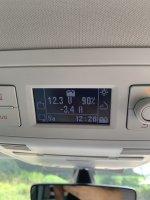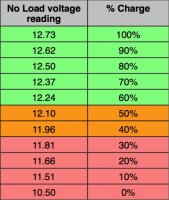No_heroes
VIP Member
This may have been covered many times, but I did a little experiment today.
T6 199 engine. I let the battery readout go down to 50%. With the fridge on 6 and some items charging like a wireless speaker etc I ran the engine to see how long it would fully recharge the readout back to 100%
I let the engine idle for 20 mins and checked. It reported back at 100%
May not be that useful or accurate test and certainly not scientific but gives me confidence on offgrid power etc.
T6 199 engine. I let the battery readout go down to 50%. With the fridge on 6 and some items charging like a wireless speaker etc I ran the engine to see how long it would fully recharge the readout back to 100%
I let the engine idle for 20 mins and checked. It reported back at 100%
May not be that useful or accurate test and certainly not scientific but gives me confidence on offgrid power etc.
















